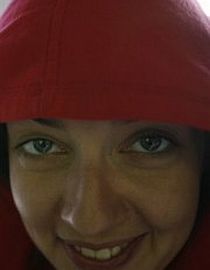


Golden Apricot/ Pelesjian
So there he was in Moscow Cinema Big Hall on a thursday evening, and it was totally packed. Artavazd Pelesjian, the Armenian director of all times. I was about to write documentary director, but has been told that he does not accept this categorisation… even if I can not imagine a better observer than Pelesjian – and his cameraman of the two last films he made in Armenia: ”Verj” (The End, 1994) and ”Kyank” (The Life, 1993). The name of the cameraman is Vahagn Ter-Hakobyan. What a documentary eye, and what an editor, superb Pelesjian himself.
The master himself was there to receive several prizes for his work. One after the other, film people and a minister of culture climbed the stage to express their (boring) hommage to the 75 year old director, who brought some humour into the ceremony.
The two films above were shown plus ”Tarva Yeghanakner” (Seasons, 1975) and ”Inhabitants” (1970). In total 55 minutes.
I have (some of) the films at home on vhs and dvd, but nothing compares to watching them on a big screen as in Yerevan. Let me highlight this time ”The End” that is shot in a train, 10 mins. long, observations of travellers who look out the window, sleeping or falling asleep, are close to each other and yet so separated, profiles, heads from behind or en face, with the sound of a train as the music of the film, edited in a rythm that seems so right, when you sit and wait for the moment where you see the train from the camera-out-of-the-window perspective, and then you go back inside again. And of course it is not ”just” a film about passengers in a train, you could say – as with Herz Frank’s ”Ten Minutes Older” – that ”this is the story of our lives”.
And yes, I find it difficult, if not impossible to properly verbalise the emotional experience you get, when meeting the works of Pelesjian. ”Seasons” again, a film I often show to emphasize the endless beauty in the human being’s constant fight for survival, here set in the mountains of Armenia, where shepherds gently take care of the sheep in all kind of weather situations, intercut with a wedding ceremony in the small village. Unforgettable sequences.
Several standing ovations to Artavazd Pelesjian in Yerevan that night.
Important PS – the film ”Il Silenzio di Pelesjian” by Pietro Marcello was also shown at Golden Apricot, you should definitely add this non-conventional, personal and also introductory documentary to your Pelesjian retrospective, whenever or whereever you get it.
